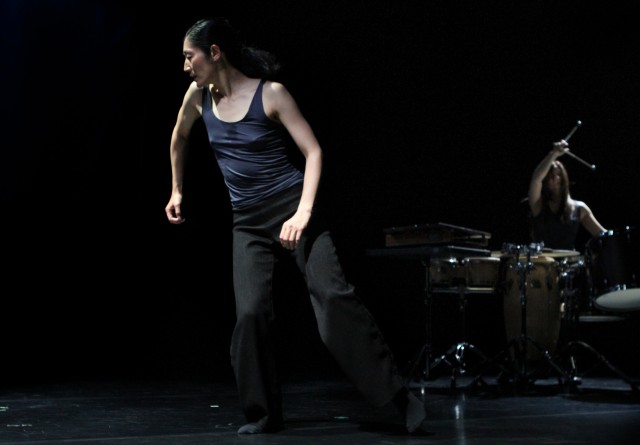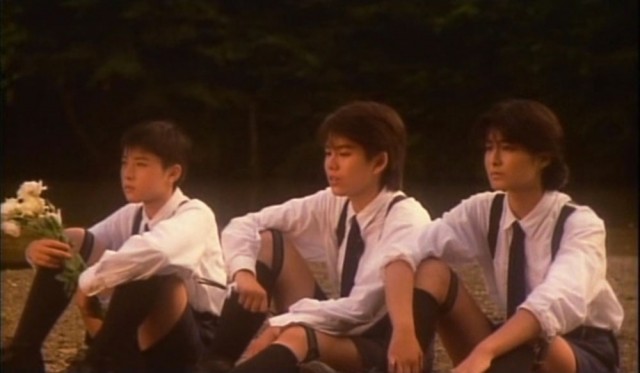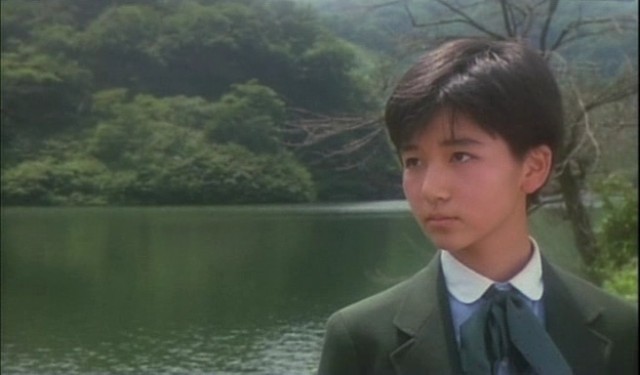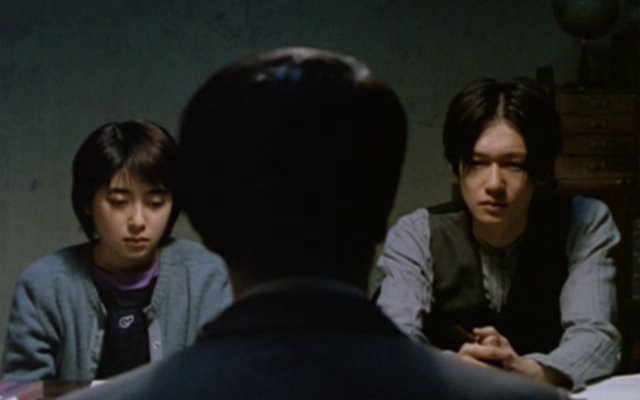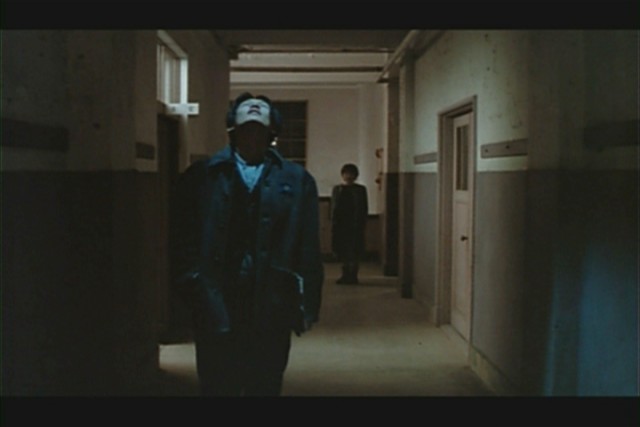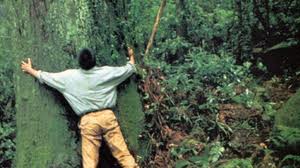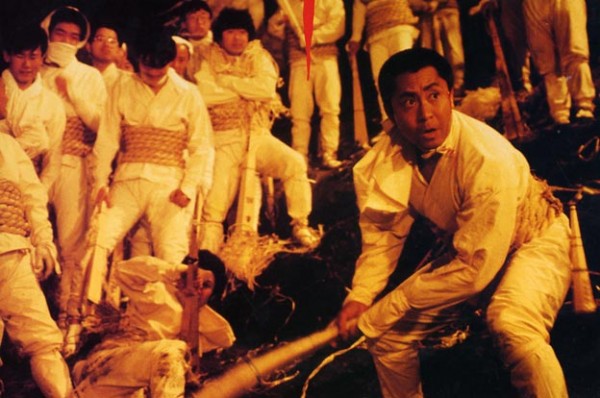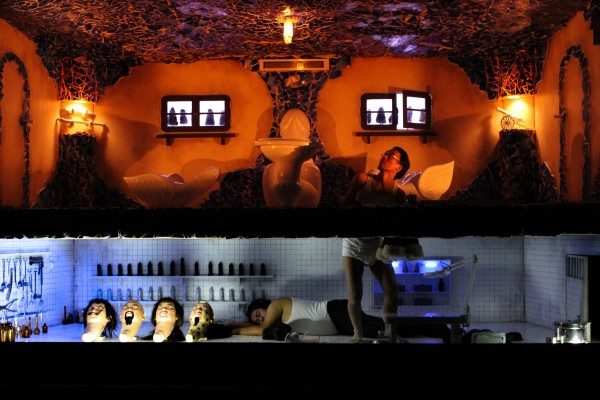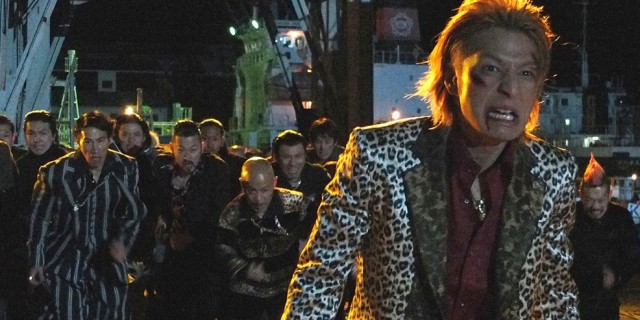
Reiji Kikukawa (Toma Ikuta) goes undercover in Takashi Miike’s way-over-the-top yakuza flick THE MOLE SONG
THE MOLE SONG: UNDERCOVER AGENT REIJI (MOGURA NO UTA SENNYU SOUSAKAN REIJI) (Takashi Miike, 2013)
Japan Society
333 East 47th St. at First Ave.
Thursday, July 10, 6:00
Festival runs July 10-20
212-715-1258
www.subwaycinema.com
www.japansociety.org
 Multigenre master and cult legend Takashi Miike kicks off the annual Japan Cuts: The New York Festival of Contemporary Japanese Cinema with the U.S. premiere of his wild and wacky yakuza comedy-thriller, The Mole Song: Undercover Agent Reiji. Adapted from Noboru Takahashi’s popular manga series Mogura no Uta, the film stars Toma Ikuta (Hanazakari no Kimitachi e) as Reiji Kikukawa, a goofy but dedicated virgin cop (think a Japanese Dudley Do-Right) who is fired by Chief Sakami (Mitsuru Fukikoshi) so he can go undercover with the dangerous Sukiya-kai gang and ultimately capture its leader, Shuho Todoroki (Koichi Iwaki). Dressed in flashy clothes and sporting a ridiculous cockatoo-like mop of red hair, Reiji is soon taken under the wing of drug-hating made man and butterfly enthusiast Masaya Hiura (Shinichi Tsutsumi), aka “Crazy Papillon”; doing fierce battle with the short, bald, diamond-toothed, cat-loving Itsei Nekozawa (Takashi Okamura) from the rival Hachinosu-kai clan; cozying up to blonde MDMA dealer Shun Tsukihara (Takayuki Yamada); and being hunted down by tattoo-covered motorcycle-riding assassin Kenta Kurokawa (Yusuke Kamiji). All the while, Reiji keeps bumping into fellow cop and potential love interest Junna Wakagi (Riisa Naka), usually at the most inopportune of moments.
Multigenre master and cult legend Takashi Miike kicks off the annual Japan Cuts: The New York Festival of Contemporary Japanese Cinema with the U.S. premiere of his wild and wacky yakuza comedy-thriller, The Mole Song: Undercover Agent Reiji. Adapted from Noboru Takahashi’s popular manga series Mogura no Uta, the film stars Toma Ikuta (Hanazakari no Kimitachi e) as Reiji Kikukawa, a goofy but dedicated virgin cop (think a Japanese Dudley Do-Right) who is fired by Chief Sakami (Mitsuru Fukikoshi) so he can go undercover with the dangerous Sukiya-kai gang and ultimately capture its leader, Shuho Todoroki (Koichi Iwaki). Dressed in flashy clothes and sporting a ridiculous cockatoo-like mop of red hair, Reiji is soon taken under the wing of drug-hating made man and butterfly enthusiast Masaya Hiura (Shinichi Tsutsumi), aka “Crazy Papillon”; doing fierce battle with the short, bald, diamond-toothed, cat-loving Itsei Nekozawa (Takashi Okamura) from the rival Hachinosu-kai clan; cozying up to blonde MDMA dealer Shun Tsukihara (Takayuki Yamada); and being hunted down by tattoo-covered motorcycle-riding assassin Kenta Kurokawa (Yusuke Kamiji). All the while, Reiji keeps bumping into fellow cop and potential love interest Junna Wakagi (Riisa Naka), usually at the most inopportune of moments.
Written by Kankuro Kudo — who wrote Miike’s Zebraman films and wrote and directed another Japan Cuts selection, Maruyama, the Middle Schooler — The Mole Song has fun going way over the top, from Yuji Hayashida’s splendid production design to Nobuyasu Kita’s stellar cinematography to the actors themselves, who must have had quite a hard time trying to keep a straight face so much of the time. Miike, who references such previous cult classics of his as Ichi the Killer and Audition, does veer off course as he tries to figure out how to end the film, as the laughs start coming fewer and farther between, and the relationship between Reiji and Junna turns into more of an afterthought, but The Mole Song is still a blast, filled with zany surprises and unpredictable plot twists. A copresentation with the fourteenth annual New York Asian Film Festival, The Mole is screening July 10 at 6:00 at Japan Society.
